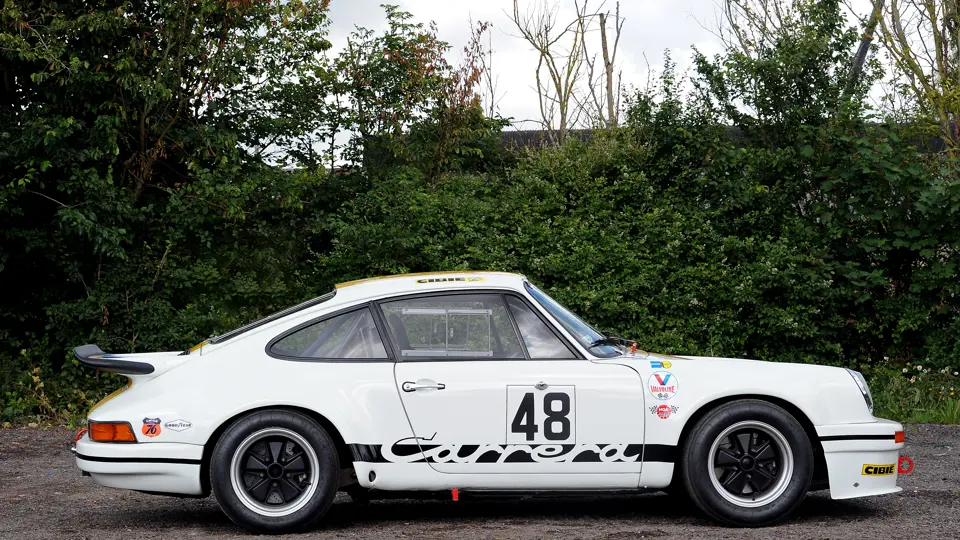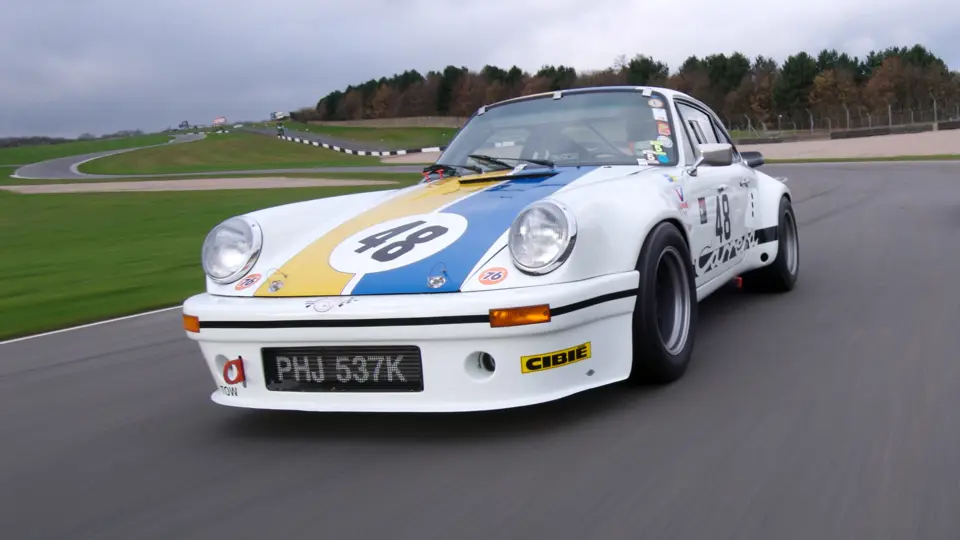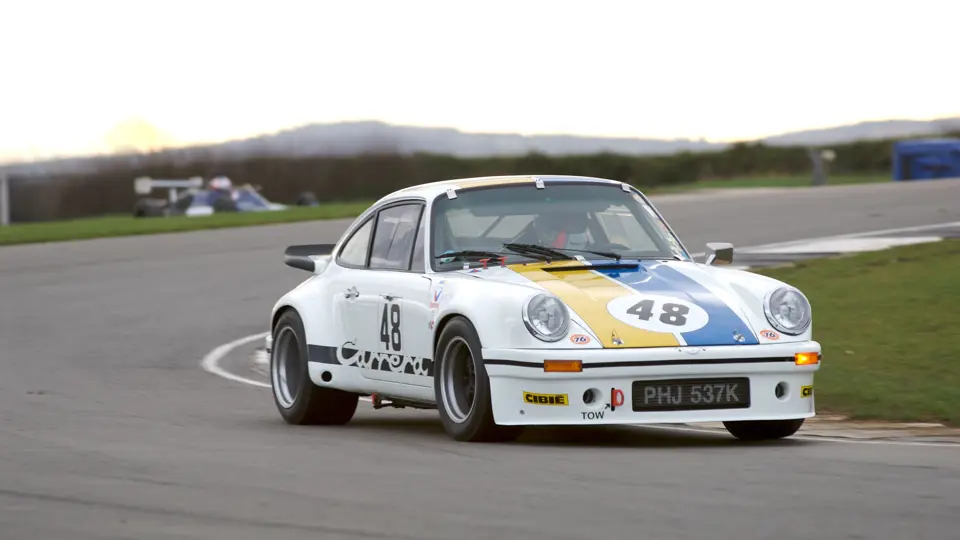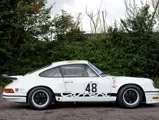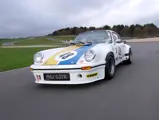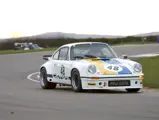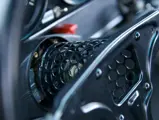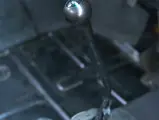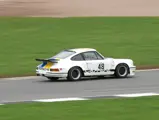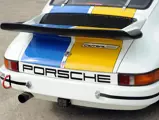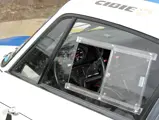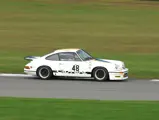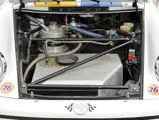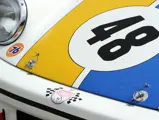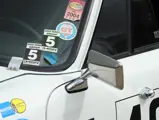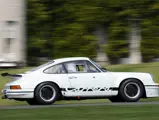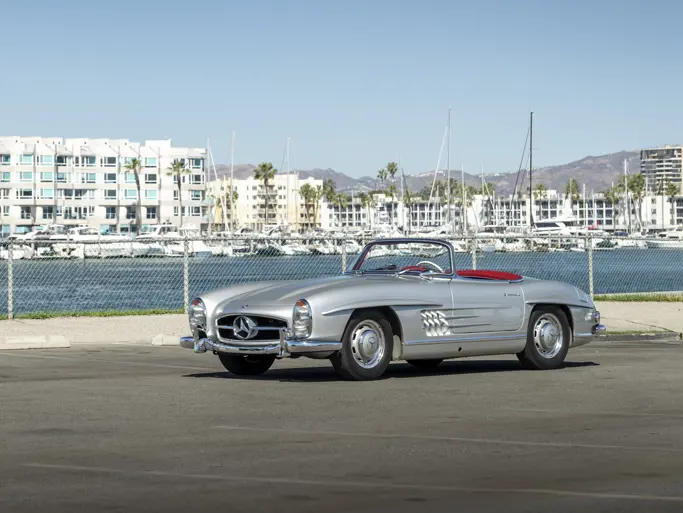3.0-liter air-cooled, horizontally opposed six-cylinder twin-plug racing engine, five-speed Type 915 manual gearbox in rear transaxle, limited-slip differential, RSR-type fully adjustable four-wheel independent suspension with Bilstein coil-over shock absorbers, and 930 Turbo-type four-wheel hydraulic disc brakes. Wheelbase: 89.3"
- A well-known 911 S upgraded to RSR specification in period
- Competition history includes 2nd in class and 7th OA at Sebring
- Recent and extensive work and FIA-legal updates by Andy Prill
- Complete with UK road registration papers and current USA HTP
In the early 1970s, Porsche took over in sports car racing where Ferrari left off, encouraged by the FIA’s shift from exotic sports prototypes to production-based machinery. Logically, Porsche selected its proven 911 for further development as a racing car and homologated the RS 2.7 Carrera in 1972 for Group 4 competition by taking the 2.4-liter 911 S and subjecting it to a myriad of improvements. Next, the much more radical RSR Carrera was created to meet the new Group 5 rules.
In their RSR, Peter Gregg and Hurley Haywood famously charged to victory in the 24 Hours of Daytona, the first race of the 1973 World Manufacturers’ Championship. By season’s end, the Carrera RSR had won the European championship for Grand Touring Cars, the Camel GT Challenge Cup (IMSA), the Targa Florio and numerous races in the SCCA’s Trans Am Championship. From this point, the mighty RSR utterly dominated GT racing for many years to follow.
The car offered here, Porsche 911 S/RSR chassis 9112300030, was a 2.4-liter 911 S when new in 1972, and then it was subsequently built and up-rated to 1974 IMSA 3.0 RSR specification and was raced in period by well-known Porsche aficionados Tim Selby and Earl Rowe. They were very prominent in Porsche circles for their racecars, which ran very successfully at some of the most high-profile races throughout the United States at circuits including Daytona, Sebring and Watkins Glen. Factory parts for the racing upgrades were bought directly from Frau Behr at Porsche AG, and Indy car builder Grant King built the roll cage. Mason Racing built the racing fuel cell and oil tank to IMSA regulations. The history of this car is quite well known, continuous and well accepted in Porsche circles as a car that was up-rated in period.
Many correct parts were used in the upgrading of the car, and it went on to run at the 12 Hours of Sebring at least three times (1981-1983), where it finished as high as 2nd in GTO and 7th overall in 1981. Recent and extensive work was performed by Porsche marque expert Andy Prill, making the car both great fun to drive and remarkably versatile. As such, it is equipped with a multitude of FIA-homologated parts including its current 3.0-liter engine, which is based on a 930 Turbo crankcase. The Type 915 five-speed gearbox is equipped with an RSR spray bar, oil pump and oil cooler, and the transaxle carries a limited-slip differential. The brakes are 930 Turbo-spec units, FIA-approved replacement parts. The suspension is Bilstein RSR-type with front and rear coil-over shocks, and the wheels fitted are 9" x 15" front and 11" x 15" rear, which are homologated for RSRs up to 1974. The 911 is also complete with a set of larger wheels that would be acceptable for RSRs running to 1975/76 racing specifications. Other FIA-approved items include new seats and harnesses, a new 100-liter fuel cell, a new fire-suppression system and fog/rain lamps. The 911 also includes a quick-release front bumper and a front-mounted endurance oil tank, and the electrics are fully re-wired.
Eligible for many vintage-racing series and events and offered complete with UK road registration papers and current USA HTP documents, this 911 S/RSR often ran against more sophisticated machinery and not only finished – it finished well.
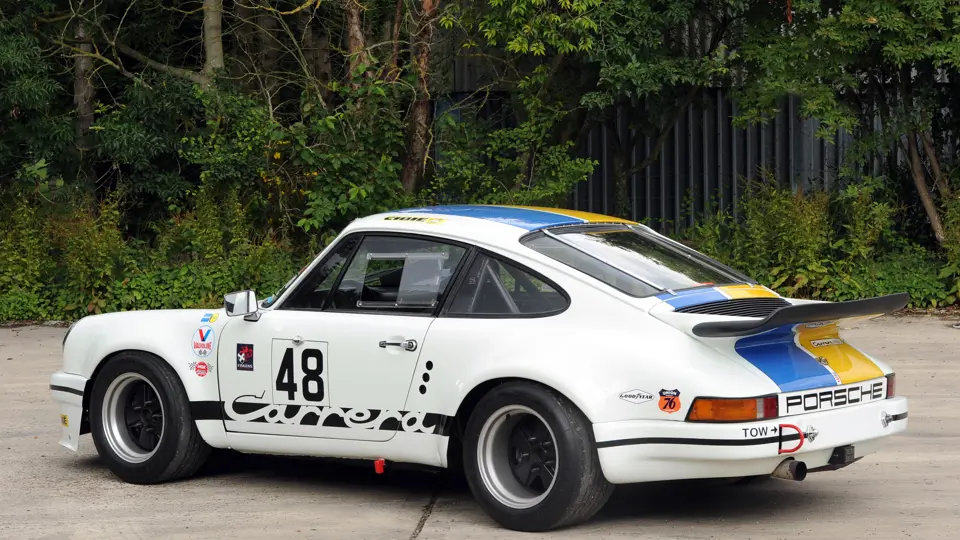
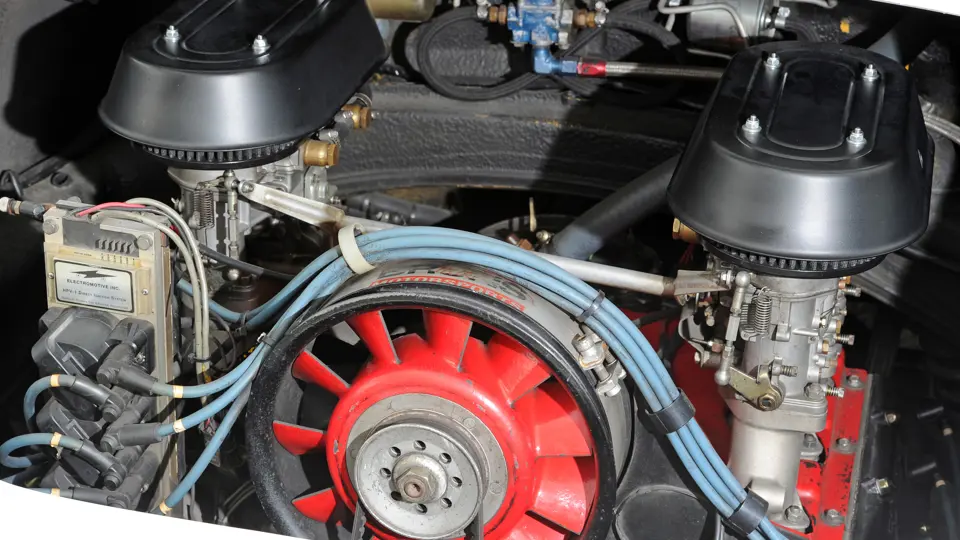


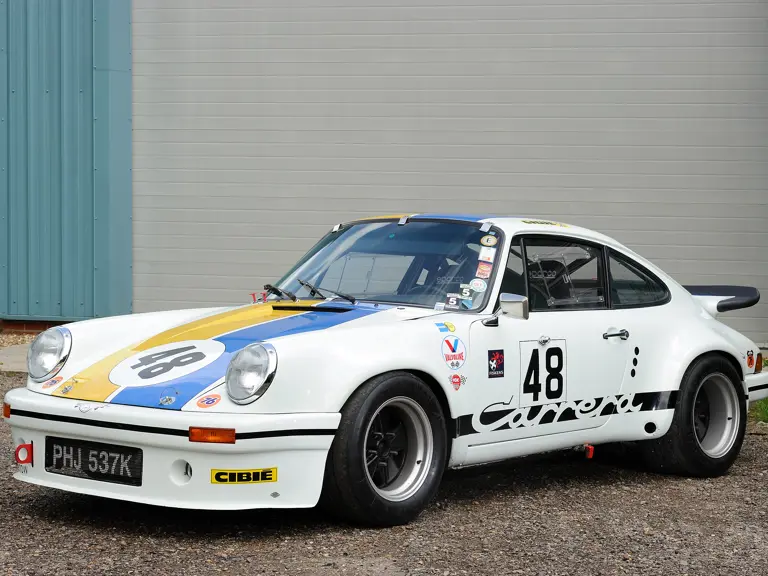
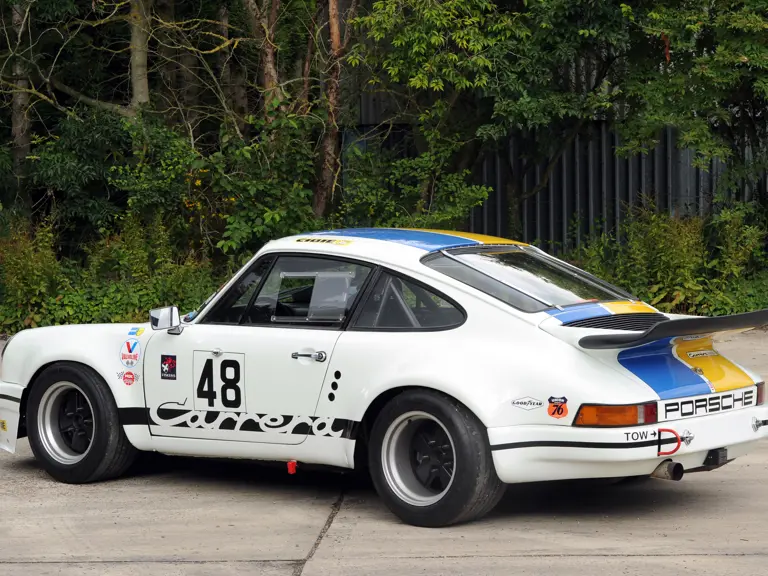
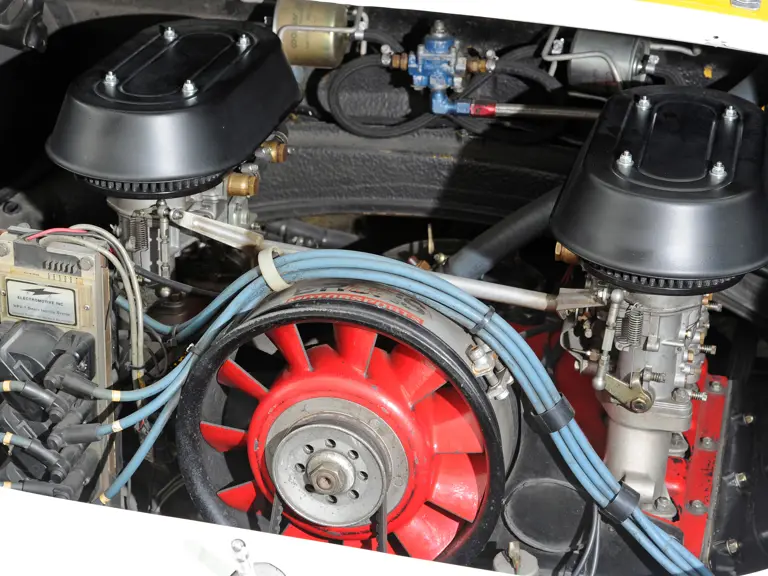
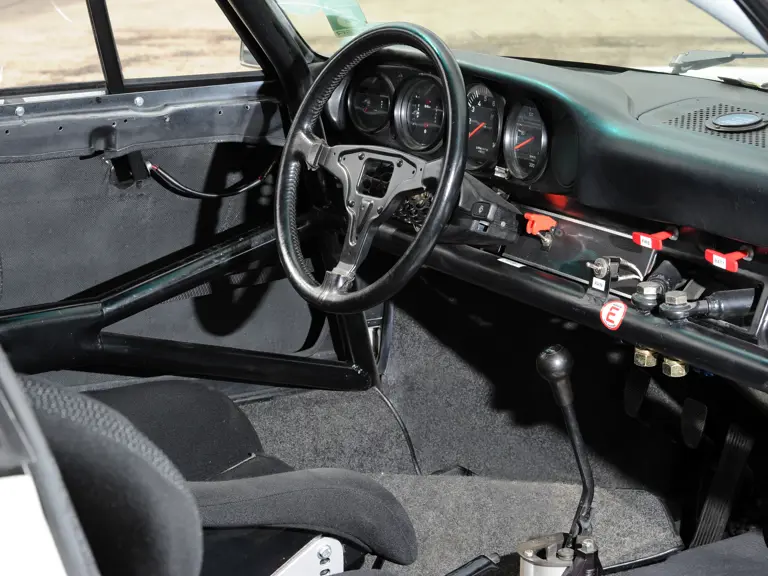
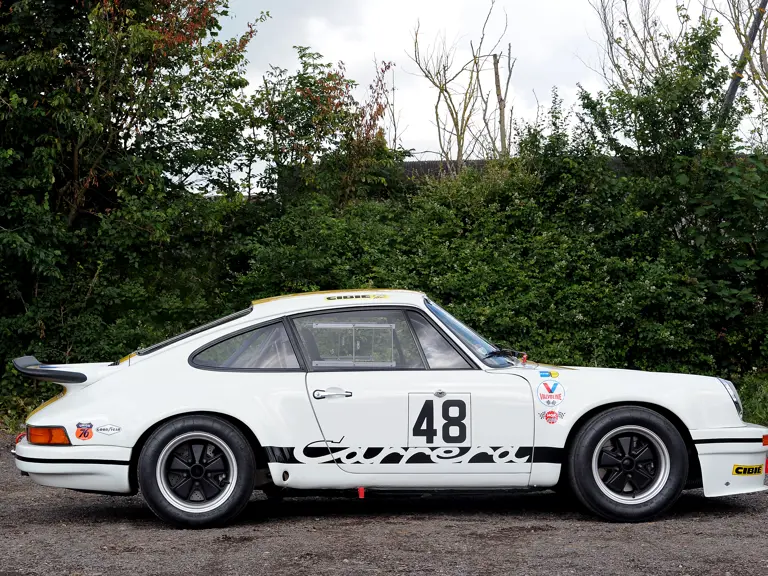



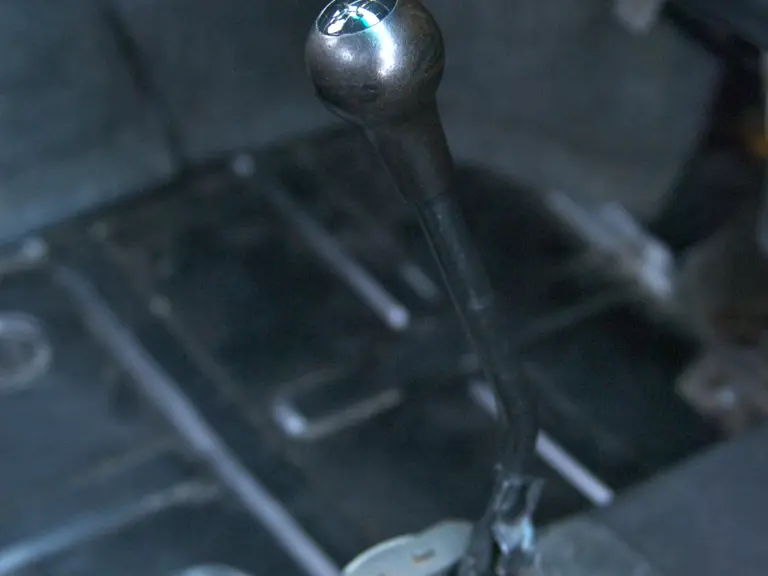
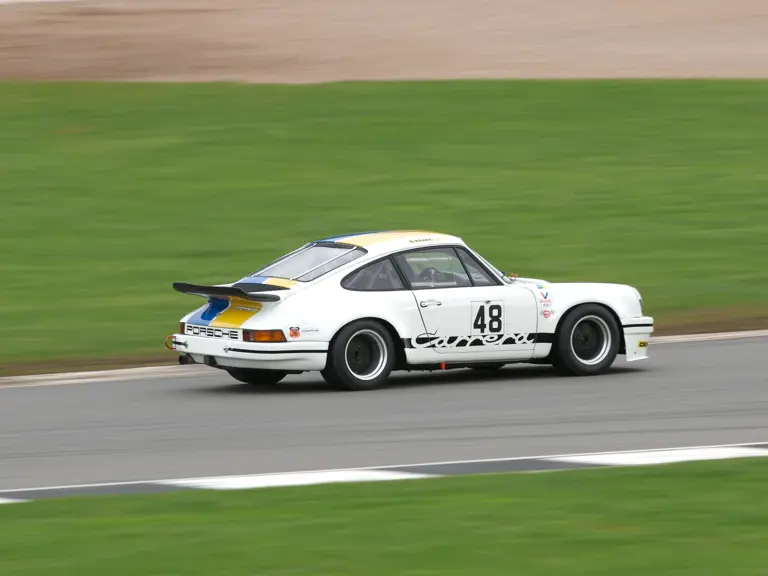
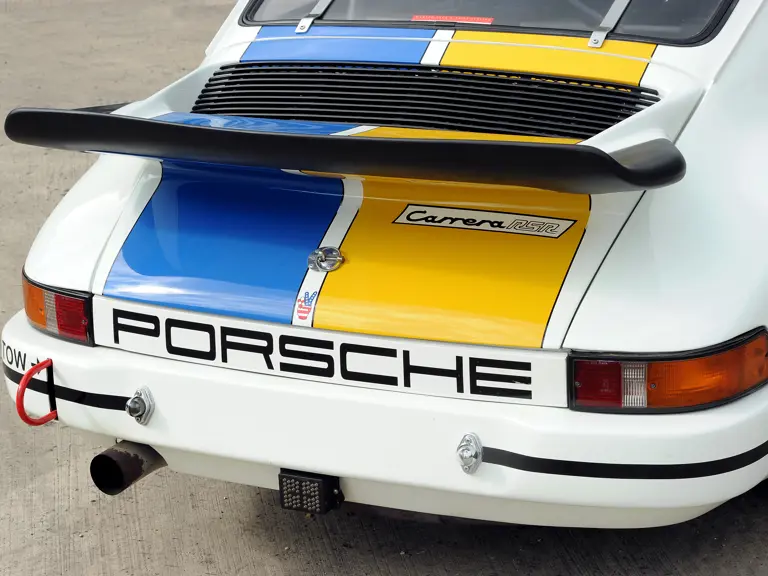
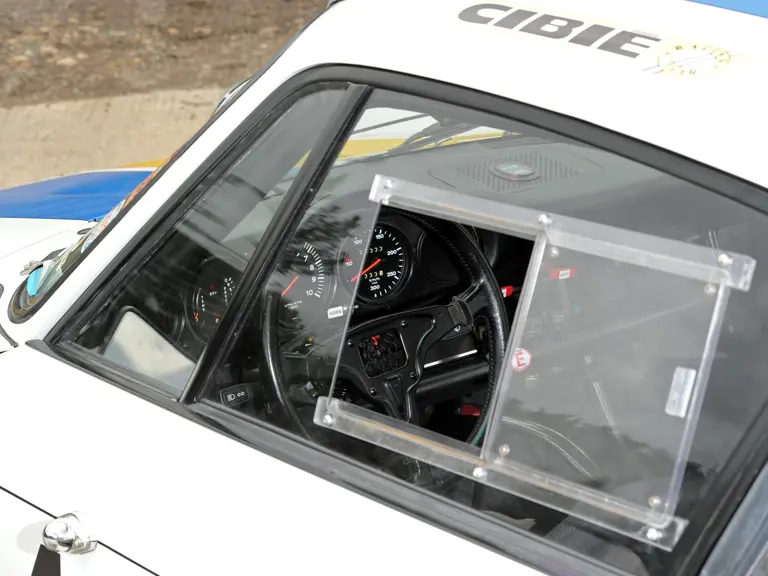
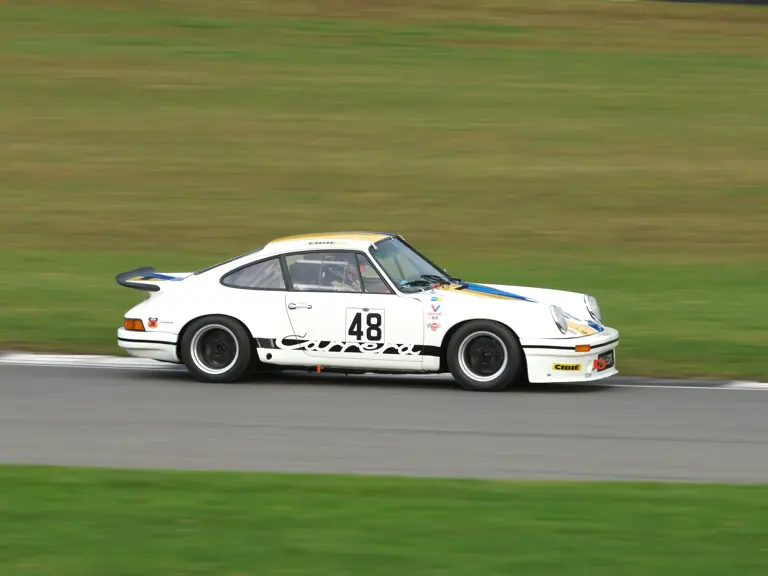
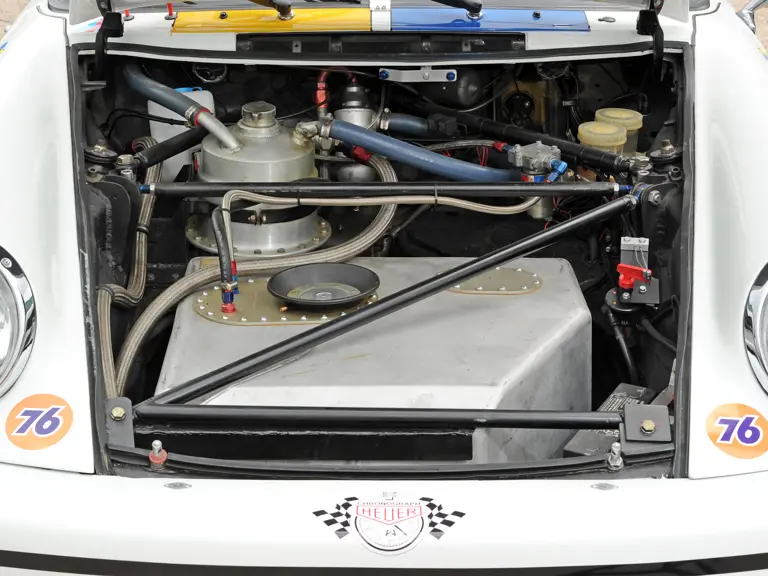
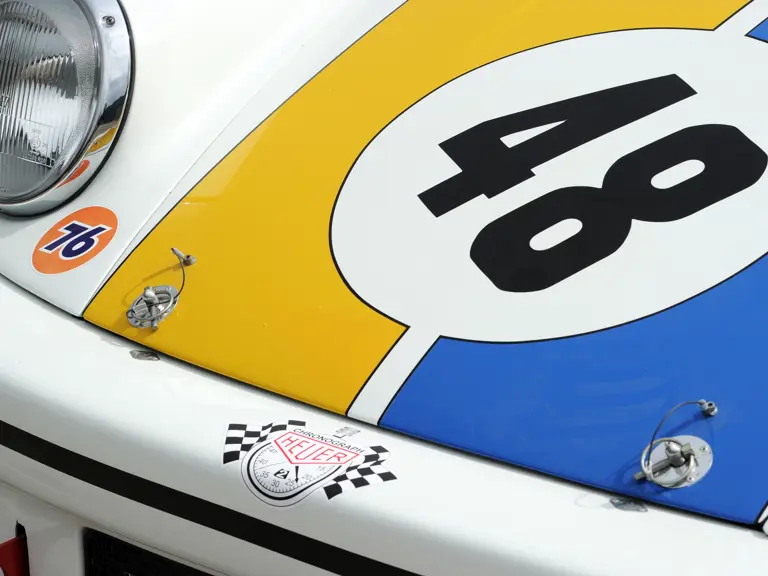
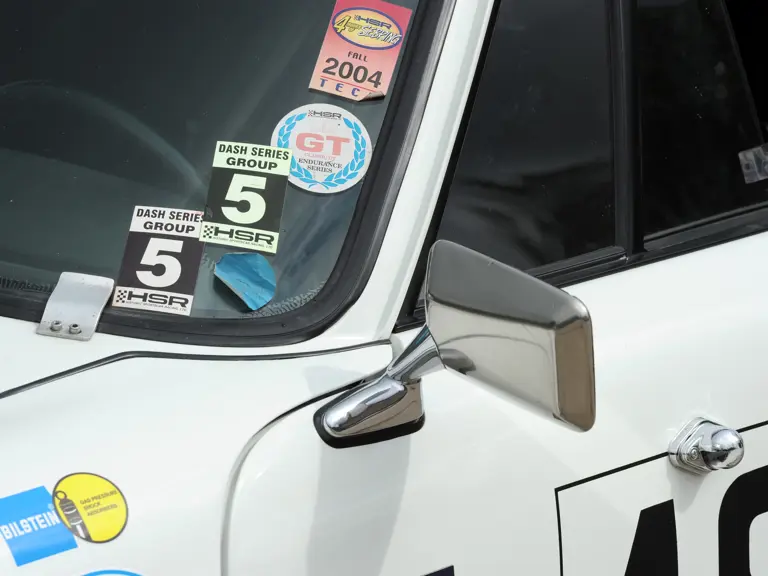
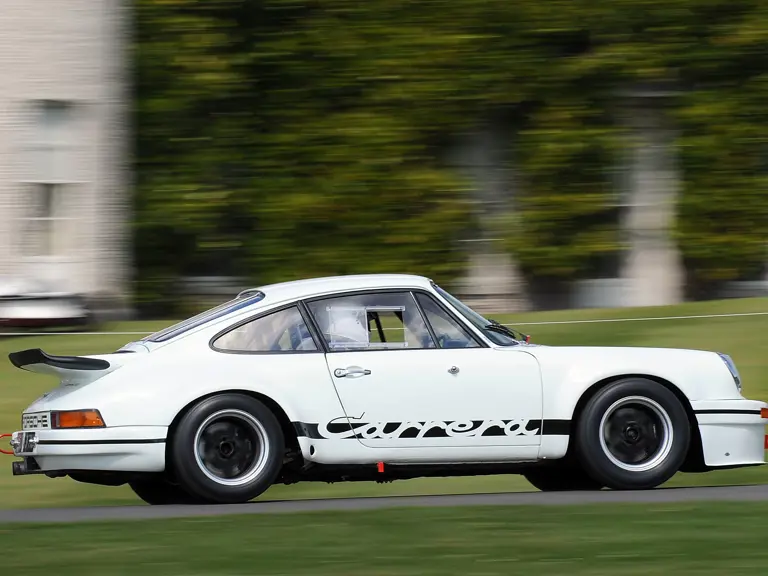
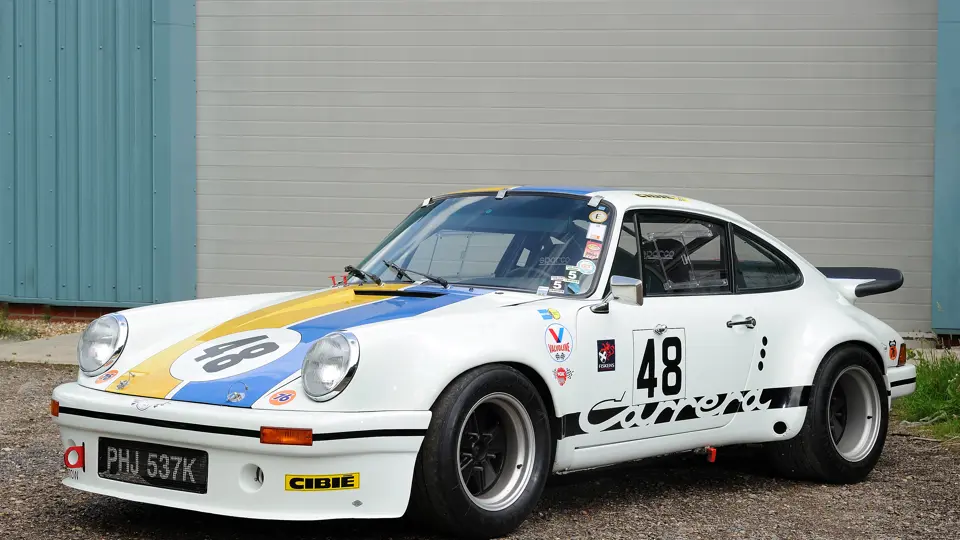
 | Monterey, California
| Monterey, California
